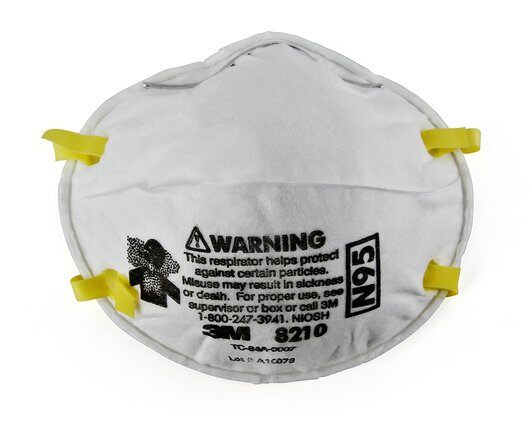With the recent Taal Volcano phreatic eruption, ash and other dangerous particles in the air are present now more than ever. On top of that, there’s no denying that Metro Manila’s atmosphere isn’t clean, with factories exhuming chemicals and car engines constantly spewing out dangerous emissions. To combat this, choosing the right face mask makes a big difference in keeping yourself safe from air pollution.
These anti-pollution face masks, also known as air-purifying respirators, are devices that help you breathe cleaner air by filtering out infectious particles. Because of this specific filter, it proves to be significantly better than using surgical masks, which only filter out large pollutant particles but fail to combat smaller ones. Taking surgical masks out of the picture, there are still a number of types of face masks to choose from. Here’s a quick guide for you to figure out what’s best for you.
N95 Air Masks

These masks filter out solid and liquid aerosol particulates at a 95 percent efficiency. However, they do not work against oil-based pollutants. It is also the most accessible and commonly used mask for everyday use.
Price: P50 to 120 depending on the store
Where to buy: Watson’s, Mercury Drug, K2 Pharmacy, Ace Hardware, Handyman
Duration: Can be used as long as the mask is not damaged
N99 and N100 Air Masks
Similar to the N95 mask, these air masks filter up to 99 to 100 percent of solid and liquid particulate matter in the air, excluding oil-based pollutants.
Price: P800 to P1500 depending on the store
Where to buy: Buy through online shopping sites, or at Watson’s, Mercury Drug, Ace Hardware, Handyman, Clean Air Store
Duration: The masks can be used for around 4-5 months, but must be washed regularly.
P95 Masks
Although more expensive, these air masks are able to filter out 95 percent of all airborne particulate matter, including oil-based pollutants.
Price: P1,000 to P1,500 depending on the store
Where to buy: Buy through online shopping sites, or at Ace Hardware, Handyman, Clean Air Store
Duration: Must be replaced after 40 hours of usage
N95 Aura Particulate Respirator
This mask is specifically designed for people who wear glasses. It includes a cooling fan that makes it suitable for hot and humid weather. It filters 95 percent of all airborne particulate matter, excluding oil-based pollutants.
Price: P600 to P1,000
Where to buy: Buy through online shopping sites
Duration: Can be used for four to five days
Air Purification Motion Mask
This mask is best used for highly polluted areas, and for those who are physically active. It’s commonly used by athletes, especially runners and joggers. It includes built-in fans that filter 99.95 percent of solid and liquid aerosol particulates.
Price: P2,000 to P2,500
Where to buy: Buy through online shopping sites or on the Prana Air website
Duration: Must be charged regularly for an hour or two after five to six hours of usage
Totobobo Mask
A more high-tech, anti-pollution mask is the Totobobo Mask, which has heat molding abilities that allow the user to customize the mask to perfectly fit their facial structure. It also comes with an anti-virus additive to prevent germ buildup. However, it is not commonly available in stores, and is more costly.
Price: P2,000 – P2,500
Where to buy: Buy through online shopping sites or on the Totobobo website
Duration: Can be reused as many times as possible as long as there is no damage
Header photo courtesy of Brittney Delgado for The State Hornet
Get more stories like this by subscribing to our weekly newsletter here.
Read more:
Air pollution may be linked to psychosis among teenagers, says study
Here’s where you can volunteer onsite for #TaalEruption2020 relief efforts
LOOK: Deeply-moving acts of bayanihan from the Taal eruptions